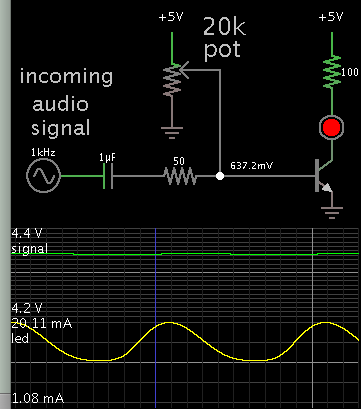jcarlson
Newbie level 4
I've built a first, small AM radio and I'm just getting into electronics. I'd like to add a station strength indicator LED. The voltage exiting the amplifier stage varies by a small amount, 100 or 200 mV, based on signal. How can I amplify that swing such that the LED will vary output in a meaningful way? Just hooking it up with a proper resistor only gives the smallest of light flickers with signal changes.
Thanks for any direction you can give!
Thanks for any direction you can give!
